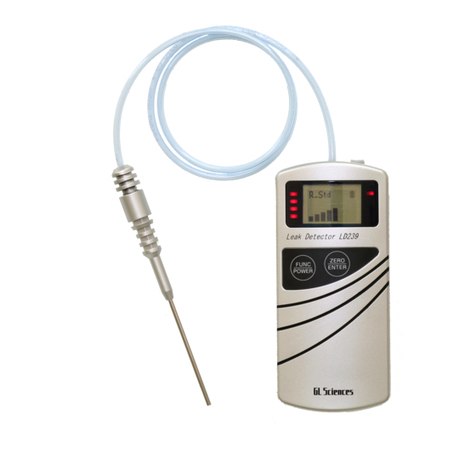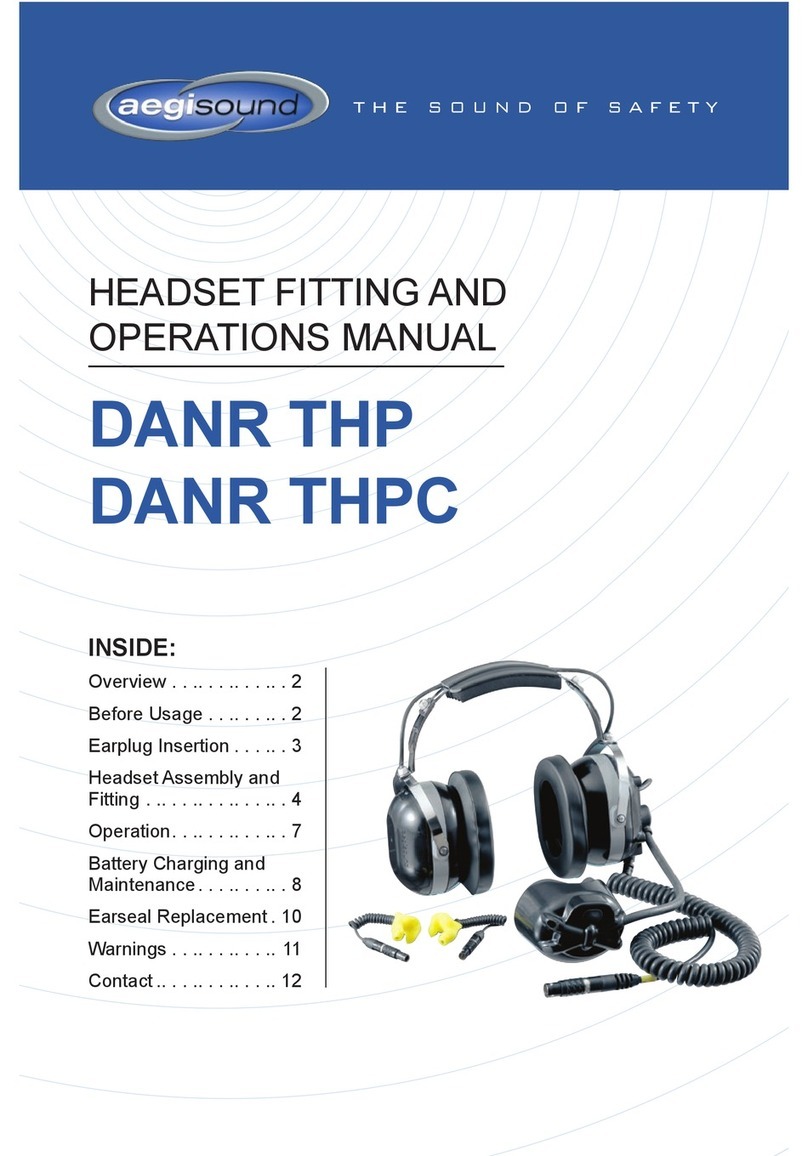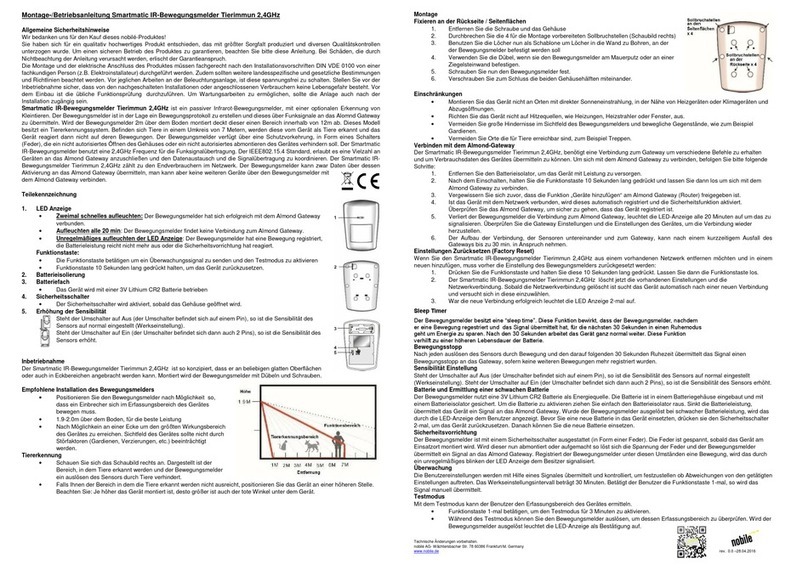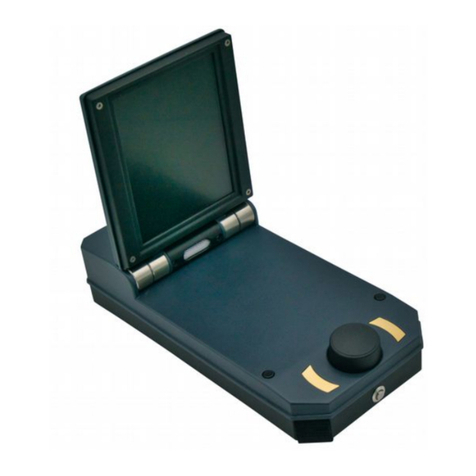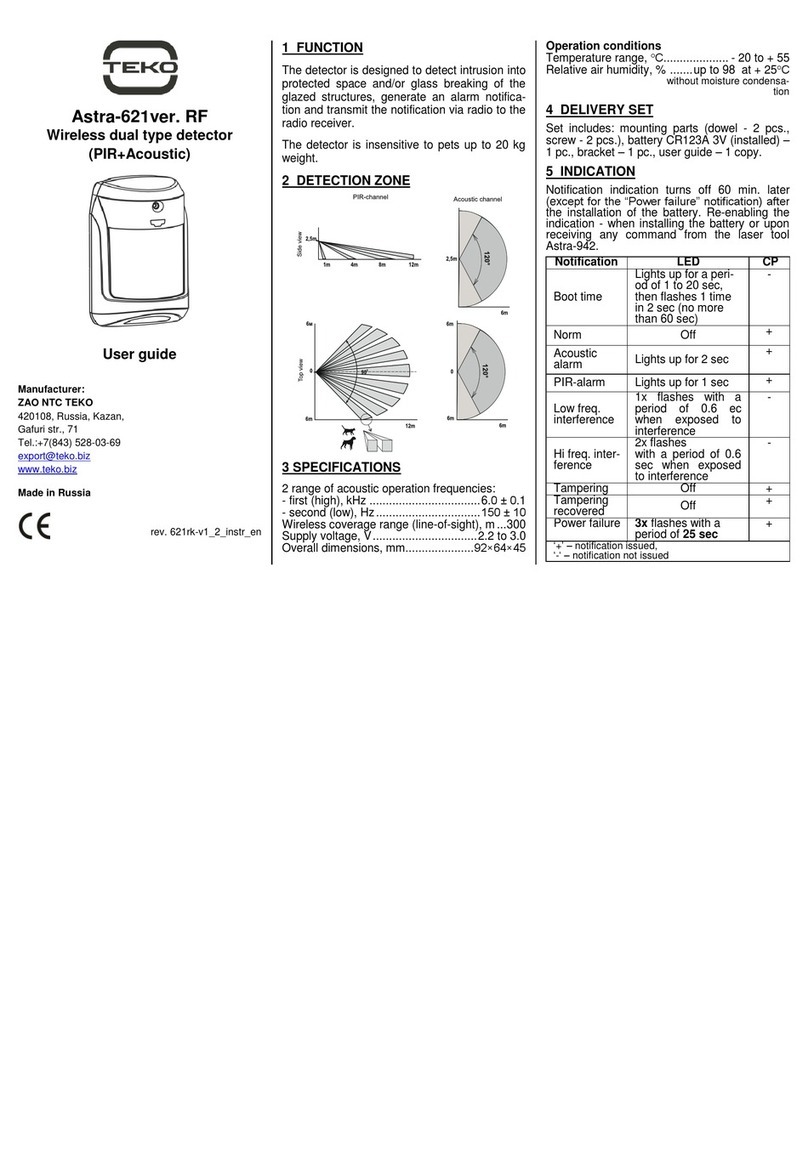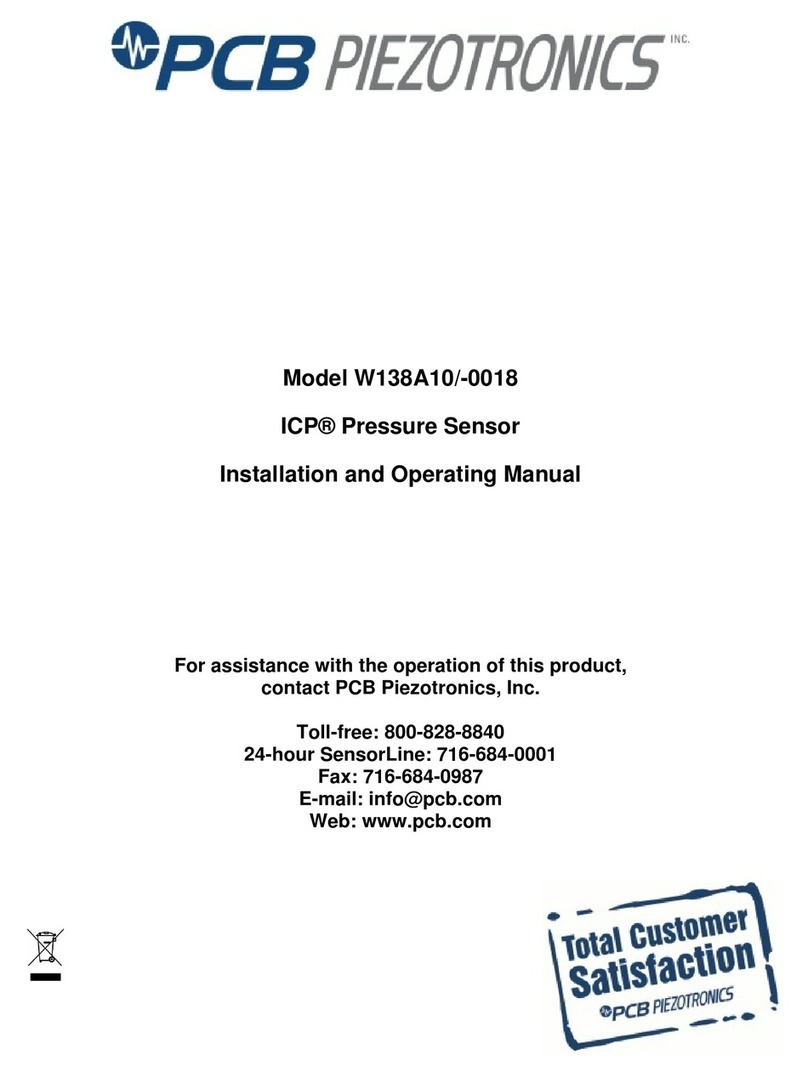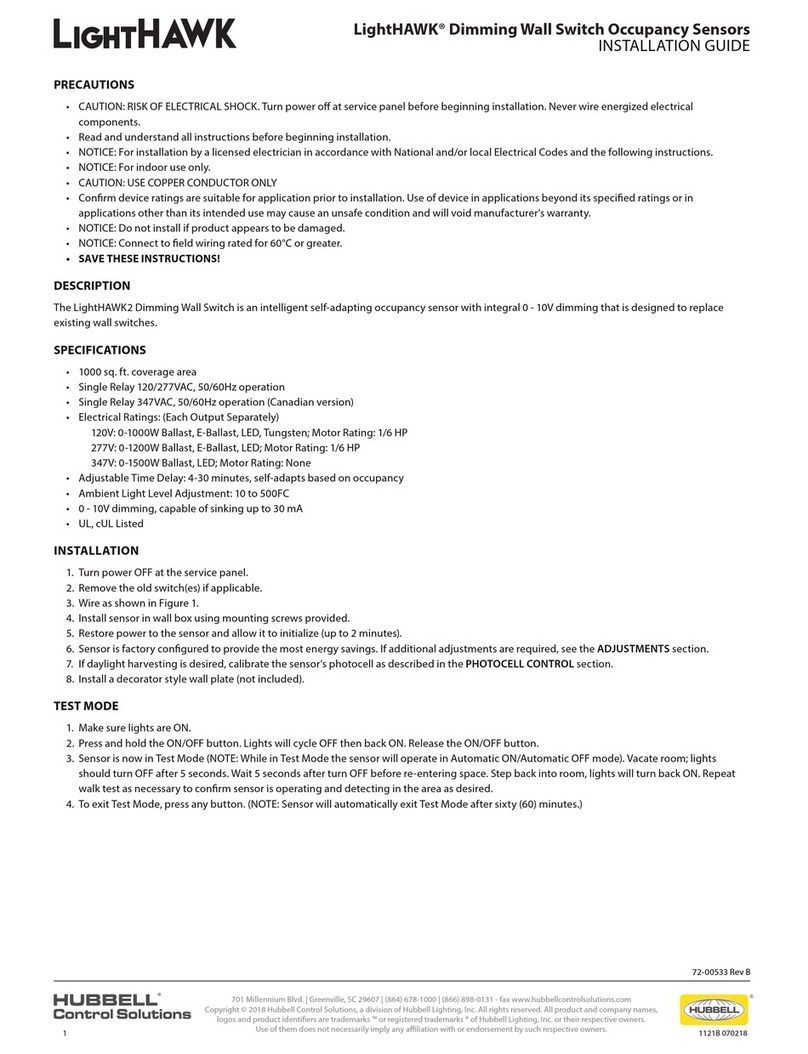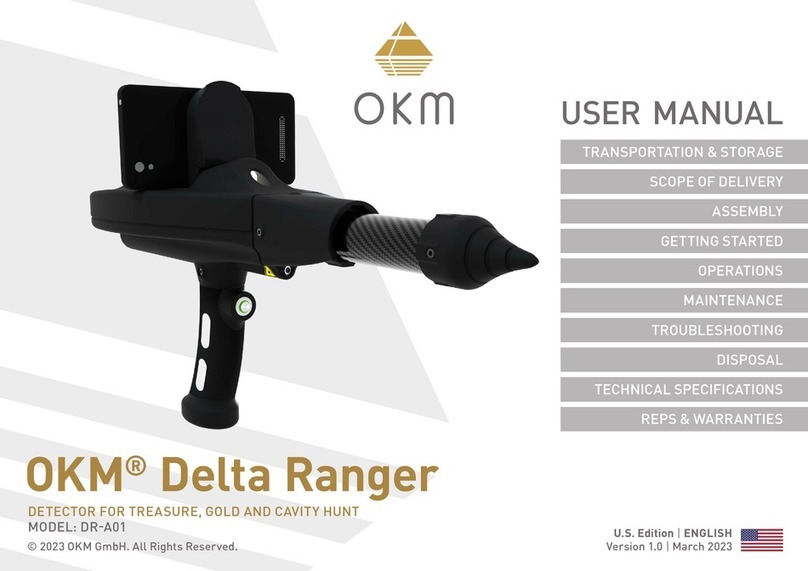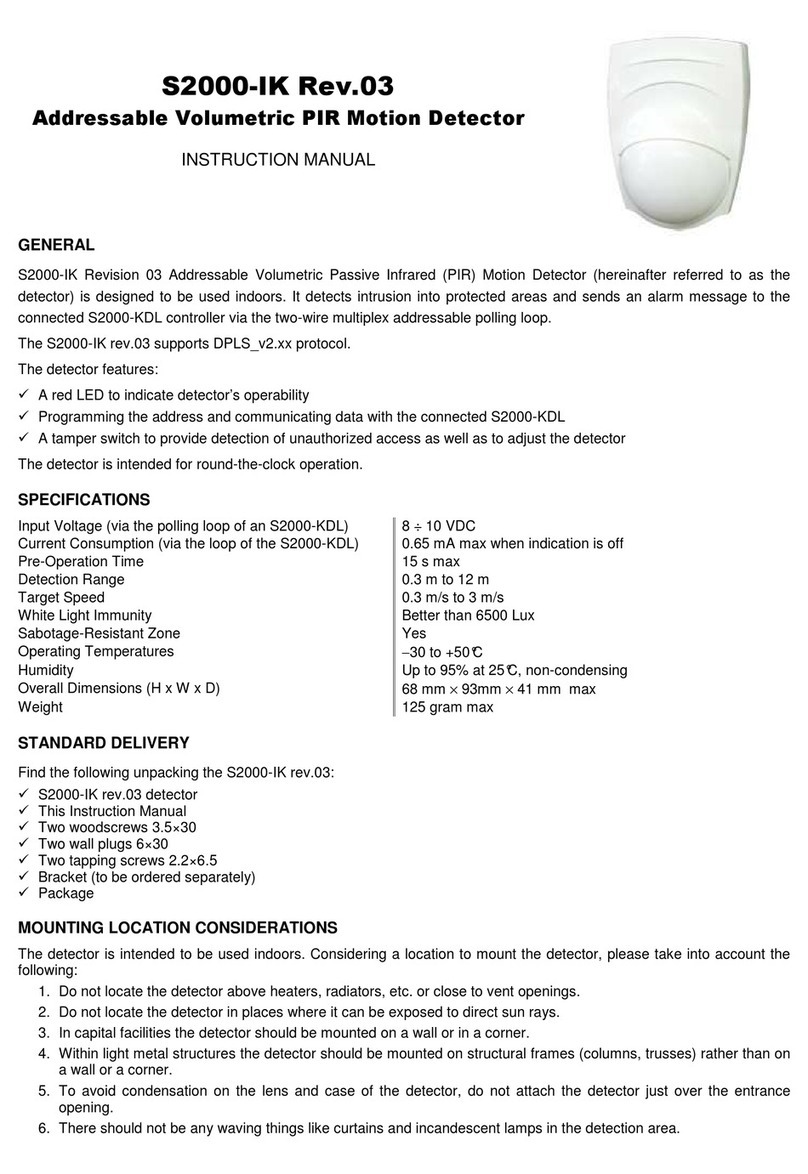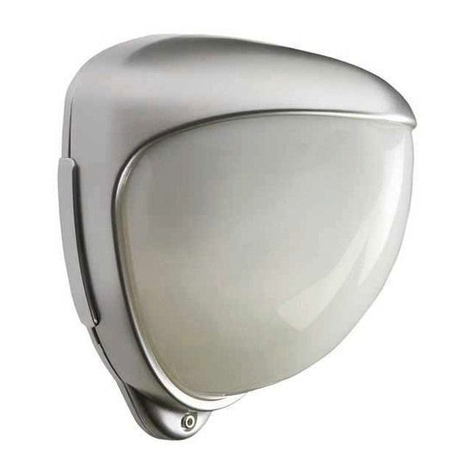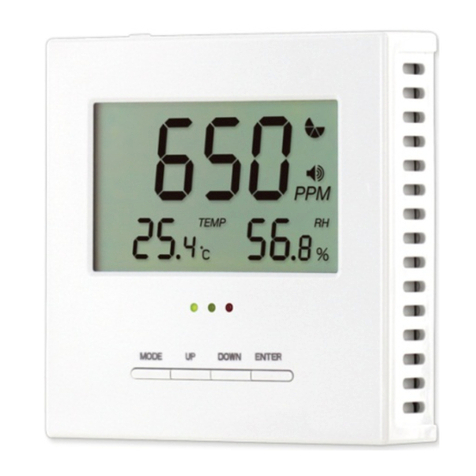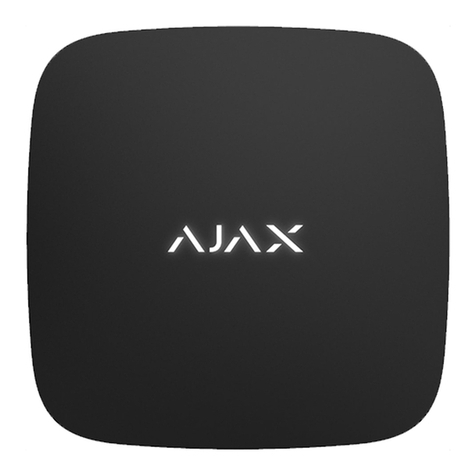GL Sciences LD239 User manual

Leak Detector LD239 Instruction Manual
Thank you for purchasing the Leak Detector LD239.
To maintain the optimum performance, read this manual before using it.
Before operating the LD239, please read this operation manual carefully to
ensure proper use. We recommend that you keep this operation manual on
hand near the product for future reference.
Introduction
Safety Notices
1. Attention
The Leak Detector LD239 indicates leaks through a dual system that
consists of an indicating LCD and an audible alarm.
LD239 is a highly sensitive instrument especially to detect helium gas and
hydrogen gas leaks, and that helps identify gas-leakage spot.
This manual indicates safety notices as follows,
1
Improper use contrary to the caution may lead to
deterioration in system performance or damage to the
system.
Warning
<Caution>
Caution
㨯Do not use the attached recharge micro USB cable
for other equipments.
㨯When removing or attaching the recharger to the
detector, make sure that the power of the detector is
OFF.
Warning
Caution
<Caution>
Improper use contrary to the warning may result in the
operator’ s death or serious injury.
Improper use contrary to the [caution] may result in
injury to the operator or property damage.
LD239 is not an explosion-proof equipment. Therefore,
do not use the detector in areas at risk of fire, explosion
or large flammable gas leaks.
㨯LD239 is not a safety guard against hazardous or
flammable gases.
㨯Do not open the detector’s body except replacing a
battery.
22-1 Nishishinjuku 6-Chome
Shinjuku-Ku, Tokyo 163-1130 Japan
Tel: 81-3-5323-6611
Fax: 81-3-5323-6622

1) When using LD239 for flammable gases leakage, make sure the
sufficient ventilation in the room.
2) The sensitivity of the detector comes to be extremely worse when the
surrounding contains the leaking gas.
3) Sensitivity of LD239 can be affected by wind. Please be careful for
outdoor use.
4) Do not use the detector to detect corrosive gases.
5) LD239 is not a quantitative device, rather it is designed to detect leaks in
gas line connections commonly associated with laboratory equipment.
6) Do not use the detector in environments that are contaminated with dust
or combustible fumes.
7) Do not use the detector outside of its specified temperature range
(10 - 40 °C).
8) Do not use the detector in a wet environment or come into contact with
any solvents.
9) Do not expose the detector to shock.
10) Ensure the device is in a stable condition during operation.
11) LD239 has sample gas line and reference gas line. Both lines are
attached filters but they are not effective for liquid samples. Do not
aspirate liquid samples.
12) Decrease of sensitivity can be caused by filter clogging. Please replace a
filter at sample line or reference line.
(Refer to “7. Replacement of service parts” )
13) Do not block the tip of the Sample Probe and Reference Port. Especially
please be careful not to press the Sample Probe against the object.
14) The detector gives a positive response to water vapor in the air. Such as
skin vapor or soapy water can be detected as gas leakage.
15) Please wait for several seconds before re-closing power.
16) LD239 may become warm during charging. This is normal and does not
indicate a malfunction.
17) Do not turn on the power of the detector while its battery is being
recharged.
18) Do not use the detector for 30 minutes to stabilize it's temperature after
recharging.
19) Attach a charging terminal cap except charging.
20) Please use LED in addition to LCD display only when needed to save the
drain on battery power.
2. Operational Notices
2

3. Battery
3
●LD239 has a rechargeable lithium-ion battery. Before using the product for
the first time, or before using the product following an extended period of
disuse, recharge the battery with an attached micro USB cable connecting
to PC. (Charging micro USB cable : Cat.No.2702-19331)
If PC is not available, use a commercial AC-USB exchange adaptor.
●When the LCD is not shown or "Low Battery Error" is indicated, the
batteries are low and must be recharged with the attached recharger.
When starting recharge, one LED on left down is indicated. After fully
charging, the LED is disappear It takes approximately 2.5 hours to fully
recharge the battery; when fully charged, they will provide approximately
5 hours of continuous service. (Std. Range, LED OFF, Buzzer OFF)
●When the battery is fully charged, disconnect the micro USB charging
cable. In case the micro USB charging cable is connected for a long time,
and the detection may get unstable because of heat-generating of the
battery. Do not connect the USB cable except for charging not to reduce
the battery life.
●A marked drop in the time a fully-charged battery retains its charge
indicates that the battery needs to be replaced. Purchase a new battery.
The battery lifetime depends on usage and battery degradation. If it
appears to be unusually short, it is need to be replaced.
(Refer to “7. Replacement of service parts” )
(1) FUNC/POWER key
ųTurning power ON/OFF and selecting
setting contents.
(2) ZERO/ENTER key
ųAdjusting zero balance and entering
setting contents.
(3) LCD display
ųShowing Standard Display and Setting
Display.
(4) LED indicators
ųIndicating leak level and battery level.
(5) Reference Port (with internal filter)
ųInlet to aspirate ambient air.
(6) Charging Terminal
ųConnecting the Charging Terminal to
PC with supplied micro USB charging
cable to charge.
(7) Battery Cover
(8) Strap Eyelet
Attaching a supplied commercial strap.
(9) Sample Probe (with internal filter)
ųAspirating sample gas.
4.Part names and functions
(9)
(4) (5) (6)
*1
(1)
*1
(2)
(3)
(7)
(8)

1) Press FUNC/POWER key for about 1 second and then the power is turned
on. Then, the LCD shows warming-up display. Warming-up takes
25seconds at standard range (Std), 90seconds at high range (Hi). Press
the ZERO/ENTER key to skip it.
5. Operating Procedure
4
2) After the warm-up or skipping the warm-up, standard display is shown.
(1) Range
R_Std: Standard Sensitivity Range
R_Hi : High Sensitivity Range (10 times more sensitive than Range Std.)
(2) Battery indicator
Battery Indicator shows the battery charge level in 3 levels.
Battery level 3:
Full charge(more than 50% is left)
Battery level 2:
Low charge Battery charge still remains to use.
(Battery charge: about 20 - 30%)
Battery level 1:
Very low Battery charging is required.
(Battery survival time is about 10 min.)
(3) Leak indicator (LCD display)
When leak gas is detected, bar graphs are displayed. The number of
bar graphs indicates level of gas leak. (Max. 8 high intensity of bar
graphs)
ZERO point display:
Leak display:
(4) Leak indicator (LED indicator)
When leak gas is detected, LED lights from the bottom left to the top
and then from the bottom right to the top. (Max. 8 lamps)
LED can be used in addition to LCD display. Combination of LCD and
LED can be set on setting display.
(Refer to “6. Setting Parameters” )
ZERO point display:
Leak display:
Standard display
(Range Std.) (Similarly displayed at Range Hi.)
㪩㪶㪪㫋㪻
(1) (2)(3)
(4)
■
Indicates the gas leak, which has higher thermal
conductivity than air.)
□ (Indicates the gas leak which has lower thermal
conductivity than air.)
Blinking 1
st
bar from the left end.
The green or the red blinks when the detector
becomes stable at near Zero point.
red light (Indicates the gas leak, which has higher
thermal conductivity than air.)
green light (Indicates the gas leak, which has lower thermal
conductivity than air.)
㪩㪶㪪㫋㪻
㩷㪮㪸㫉㫄㩷㫌㫇
㩷㩷㩷㪉㪌㩷
㪪㫂㫀㫇㪑㪜㪥㪫
25 - second countdown
Press ZERO/ENTER key to skip.
Warming-up display
(Range Std.)

5
3) First, check the stability at zero point.
■ & □ on the left will be blinking alternately when the detector becomes
stable. When the leak indicator is displayed without leakage, press ZERO /
ENTER key to adjust the zero balance. Under conditions such as
fluctuation of temperature or humidity, the detector needs zero point
adjustment. LED display as well as LCD display.
4) Place the sample probe tip near the gas connection to leak check.
One Gas Leak Mark indicates there may or may not be gas leaks
especially on a High range. Two or more Gas Leak Marks indicate there is
a gas leak.More than 3 Gas Leak Marks are indicated, and the audible
alarm sounds whenthe buzzer functionON is selected.
(Refer to “6. Setting Parameters” )
5) Turn off the detector after use.
LD239 can be turned off in either automatic or manual mode Refer to [6.
Setting Parameters.
● Set Auto Power Off function to ‘ON’
This function turns the detector off automatically 10min. after use. It will
be helpful to prevent leaving the detector turning off.
● Set Auto Power Off function to ‘OFF’
Hold down the FUNC/POWER key for 3 seconds to turn the power OFF.
6. Setting Parameters
1) Parameter Setting items and contents
㪩㪶㪪㫋㪻 㪩㪶㪪㫋㪻 㪩㪶㪪㫋㪻
or ZERO
ENTER
Out of zero point ZERO adjust
Content
Range
Buzzer
LED
Backlight
A.P.Off
Sets the buzzer to alarm
ON : Use(More than 3 Gas Leak Marks.)
OFF: Not Use
Sets LED in combination with LCD display
ON: Use, OFF: Not Use
Sets LCD backlight
ON: Use, OFF: Not Use
Sets Auto Power Off
ON: Use, OFF: Not Use
Parameter Setting item
Sets Range
Std: Standard Sensitivity Range
Hi : High Sensitivity Range

6
2) Flow diagram of parameter settings
㪩㪶㪪㫋㪻 㪩㪶㪟㫀
Standard Display(Std range) Standard Display(Hi range)
㪧㪸㫉㪸㫄㪅㪪㪼㫋
䄿㪙㪸㪺㫂㫃㫀㪾㪿㫋
㩷㩷㩷㩷㩷㩷㩷㩷㩷㩷㩷㩷㩷㩷㩷㩷
䅃㪘㪅㪧㪅㪦㪽㪽㩷㩷㩷㩷
●Setting the Range
●Setting the Buzzer
●Setting the LED
●Setting the Backlight
●Setting the Auto Power Off
ZERO
ENTER
FUNC
POWER
FUNC
POWER
FUNC
POWER
FUNC
POWER
FUNC
POWER
ZERO
ENTER
ZERO
ENTER
ZERO
ENTER
ZERO
ENTER
ZERO
ENTER
ZERO
ENTER
ZERO
ENTER
ZERO
ENTER
ZERO
ENTER
FUNC
POWER
FUNC
POWER
FUNC
POWER
FUNC
POWER
FUNC
POWER
FUNC
POWER
or
㪦㪥
㪧㪸㫉㪸㫄㪅㪪㪼㫋
䅃㪩㪸㫅㪾㪼㩷㩷㩷㩷㩷㩷
䄿㪙㫌㫑㫑㪼㫉㩷㩷㩷㩷
䄿㪣㪜㪛㩷㩷㩷㩷㩷㩷㩷㩷
㪪㫋㪻
㪦㪥
㪦㪥
㪧㪸㫉㪸㫄㪅㪪㪼㫋
䅃㪩㪸㫅㪾㪼㩷
䄿㪙㫌㫑㫑㪼㫉
䄿㪣㪜㪛㩷㩷㩷㩷
㪪㫋㪻
㪦㪥
㪦㪥
㪧㪸㫉㪸㫄㪅㪪㪼㫋
䅃㪩㪸㫅㪾㪼㩷㩷
䄿㪙㫌㫑㫑㪼㫉㩷
䄿㪣㪜㪛㩷㩷㩷㩷㩷
㪟㫀
㪦㪥
㪦㪥
㪧㪸㫉㪸㫄㪅㪪㪼㫋
䄿㪩㪸㫅㪾㪼㩷㩷
䅃㪙㫌㫑㫑㪼㫉㩷
䄿㪣㪜㪛㩷㩷㩷㩷㩷
㪪㫋㪻
㪦㪥
㪦㪥
㪧㪸㫉㪸㫄㪅㪪㪼㫋
䄿㪩㪸㫅㪾㪼㩷㩷
䅃㪙㫌㫑㫑㪼㫉㩷
䄿㪣㪜㪛㩷㩷㩷㩷㩷
㪪㫋㪻
㪦㪥
㪦㪥
㪧㪸㫉㪸㫄㪅㪪㪼㫋
䄿㪩㪸㫅㪾㪼㩷㩷
䅃㪙㫌㫑㫑㪼㫉㩷
䄿㪣㪜㪛㩷㩷㩷㩷㩷
㪦㪝㪝
㪪㫋㪻
㪦㪥
㪧㪸㫉㪸㫄㪅㪪㪼㫋
䄿㪩㪸㫅㪾㪼㩷㩷
䄿㪙㫌㫑㫑㪼㫉㩷
䅃㪣㪜㪛㩷㩷㩷㩷㩷
㪪㫋㪻
㪦㪥
㪦㪥
㪧㪸㫉㪸㫄㪅㪪㪼㫋
䄿㪩㪸㫅㪾㪼㩷㩷
䄿㪙㫌㫑㫑㪼㫉㩷
䅃㪣㪜㪛㩷㩷㩷㩷
㪪㫋㪻
㪦㪥
㪦㪥
㪧㪸㫉㪸㫄㪅㪪㪼㫋
䄿㪩㪸㫅㪾㪼㩷㩷㩷㩷㩷㩷
䄿㪙㫌㫑㫑㪼㫉㩷㩷㩷㩷
䅃㪣㪜㪛㩷㩷㩷㩷㩷㩷㩷 㪦㪝㪝
㪪㫋㪻
㪦㪥
㪧㪸㫉㪸㫄㪅㪪㪼㫋
䅃㪙㪸㪺㫂㫃㫀㪾㪿㫋
㩷㩷㩷㩷㩷㩷㩷㩷㩷㩷㩷㩷㩷㩷㩷㩷
䄿㪘㪅㪧㪅㪦㪽㪽㩷㩷㩷㩷
㪦㪥
㪦㪥
㪧㪸㫉㪸㫄㪅㪪㪼㫋
䅃㪙㪸㪺㫂㫃㫀㪾㪿㫋
㩷㩷㩷㩷㩷㩷㩷㩷㩷㩷㩷㩷㩷㩷㩷㩷
䄿㪘㪅㪧㪅㪦㪽㪽㩷㩷㩷㩷㪦㪥
㪦㪥
㪧㪸㫉㪸㫄㪅㪪㪼㫋
䅃㪙㪸㪺㫂㫃㫀㪾㪿㫋
㩷㩷㩷㩷㩷㩷㩷㩷㩷㩷㩷㩷㩷㩷㩷
䄿㪘㪅㪧㪅㪦㪽㪽㩷㩷㩷
㪦㪝㪝
㪦㪥
㪦㪥
㪧㪸㫉㪸㫄㪅㪪㪼㫋
䄿㪙㪸㪺㫂㫃㫀㪾㪿㫋
㩷㩷㩷㩷㩷㩷㩷㩷㩷㩷㩷㩷㩷㩷㩷㩷
䅃㪘㪅㪧㪅㪦㪽㪽㩷㩷㩷㩷
㪦㪥
㪦㪥
㪧㪸㫉㪸㫄㪅㪪㪼㫋
䄿㪙㪸㪺㫂㫃㫀㪾㪿㫋
㩷㩷㩷㩷㩷㩷㩷㩷㩷㩷㩷㩷㩷㩷㩷㩷
䅃㪘㪅㪧㪅㪦㪽㪽㩷㩷㩷 㪦㪝㪝
㪦㪥
:At blinking (Selecting) condition

●Replacement of Sample Probe Filter
a) Unscrew the probe cap counterclockwise, and disjoin the probe and
probe cap. The Sample Filter is attached to the probe cap.
b) Remove the old Sample Filter from the probe cap.
When the Sample filter is stuck to the probe cap, use long-nose pliers.
c) Insert the PTFE tubing into a new Sample Filter to attach the Sample
Filter tightly to Protective tubing.
Sample Filter : Cat.No.2702-19333
d) Finally, attach the probe to the probe cap tightly.
7
7. Replacement of service parts
●Battery Replacement
1) How to remove the old battery
a) Remove a screw with a small
Phillips-head screw driver.
b) Remove the battery cover.
c) Remove the battery by pushing in the
direction an arrow.
●Replacement of Reference Port Filter
Pick the old Reference Filter out, and replace a new Reference Filter.
Reference Filter : Cat.No.2702-19334
2) How to install a new battery
a) Install a new battery pushing.
b) Fasten the battery cover properly.
c) Attach the cover with a small
Phillips-head screw driver.
LD239 Battery : Cat.No.2702-19341
a) b)
c)
a)
b)
c)
Holding pins
Terminals
Probe Probe cap
Sample Filter
a)
b)
PTFE tubing
Protective tubing
Sample Filter
c)
Reference Filter

8
8. Specifications
Notice: The sensitivity should be dependent on the difference between the thermal
conductivities of gas and air (24.1(mW / m㨯M at 0 °C, 1atm); a large difference
results in a high sensitivity. Also, the kinds of gas and humidity should influence
the sensitivity.
Thermal conductivity of some common gases [(mW / m㨯k) at 0°C, 1atm]
● The lithium-ion battery inside the LD239 does not apply battery regulations in Russia or
Australia. Do not bring the LD239 these countries.
Leak Detector LD239 Instruction Manual (Cat.No.2702-19336)
Rev.1-1
Printed in Japan Copyright © 2012 GL Sciences Inc.
Detector:
Charging micro USB cable(1m), Instruction Manual,
LD239 Battery(built-in), Sample Filter(built-in), Reference Filter(built-in)
Power supply:
Display:
Thermal conductivity of gases:
Sensitivity:
Overall size:
Accessories:
Operating temperature range:
Net weight:
Parameter setting:
Thermistor-actuated thermal conductivity cell
He, CO2, Ar, Ne, etc. (not available under flammable or corrosive atmosphere)
Selectable from 2 ranges: Standard(Std.) Range and High(Hi.) Range
[Std Range] Helium 0.005mL/min in atmosphere
[Hi Range] Helium 0.0005mL/min in atmosphere
[Leakage display] LCD display(Max. 8 bar graphs), LED(Max. 8 lamps)
[Parameter setting display] LCD display
Range(Std./Hi.), Buzzer(ON/OFF), LED(ON/OFF), LCD backlight(ON/OFF),
Auto Power Off(ON/OFF)
Rechargeable battery-powered equipment(built-in dedicated lithium-ion battery)
[Charging time] Max. 2.5 hours
[Continuous operation] Approximately 5 hours (with new, fully charged batteries)
(Std. Range, Buzzer OFF, LED OFF, LCD Backlight OFF)
10 - 40 °C(non condensing)
50(W) × 19.5(D) × 111(H) mm (excluding projection)
Approximately 95g
Hydrogen *
Helium *
Neon *
Methane *
168.2
142.2
46.5
30.2
Air
Nitrogen
Ethane
Ethylene
24.1
24.0
18.0
16.4
Argon
Carbon dioxide
Krypton
Xenon
16.3
14.5
8.7
5.2
Gas thermal
conductivity Gas Gas
thermal
conductivity thermal
conductivity
● Action for Environment (WEEE)
To users of GL Sciences equipment in the European Union:
The WEEE (Waste Electrical and Electronic Equipment) symbol on the product
indicates that it should be disposed of as agreed between the end user and the
distributor in a manner consistent with required WEEE Directives. It should not
be disposed of with general household waste.
: Gases which have higher thermal conductivity than air.
*: Undetectable gases
Other manuals for LD239
1
Table of contents
Other GL Sciences Security Sensor manuals
